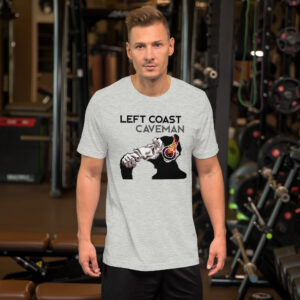Slide into those tights, unroll your mat, spark up the salt lamp (or other medicinals), and switch on your essential oil diffuser. Make time for active recovery.
While often we focus singularly on “gainz” and novel primalistic ways of taking the body and mind to that darker side of the cave, I believe we omit a very important facet of performance balancing. Arguably, the practice of yoga (or dedicated segment devoted to stretching and isometric strengthening) is a strong coefficient to self optimization not usually prioritized, and represents a large gap in our periodization of training both body and mind.
Though, I do not purport yoga as being my favorite modality, I have been proselytized to a degree, enough so that my tribe is often ready to roll me up in my smiling daisy garnished yoga mat and throw me down stairs upon hearing me utter that hackneyed phrase “bro you should do some yoga”. Honestly, I get a bit annoyed with myself on how often I recommend, but there is assuredly something to this type of training that benefits the body outside the scope of most grinding workouts, while providing a more holistic balancing in tandem with strengthening.
Recovery Catalyst: While many take rest days, I encourage a shift to recovery days; a series of static and active stretching flows that temper both body and mind. Activity should be done every day, especially on recovery days. Yoga provides a structured and progressive way of increasing blood circulation, bolstering the exchange of nutrients, and removal of waste products to nourish beleaguered muscle while mitigating soreness. These routines also allow for a gentle way of breaking up muscle adhesions (soft casting / inelastic collagenous nodules) caused by workout trauma. Net effect: recover quicker and return to training with savagery.
Injury Proofing: using both static and active techniques one can reset the length tension relationships between muscle and bone that often is destroyed by maladaptive daily living patterns (think sitting at the office, in car commutes, or working out without warming up). Correcting these imbalances increases performance by allowing full contractions of muscle cross bridges while also allowing proper range of motion at the joint (arthrokinematics). Once these imbalances occur, patterns of movement are altered, secondary muscles often assist or become primary to a pathogenic degree. Joints subsequently may wear prematurely, and performance is hindered in short and long term. There is also subsidiary performance enhancements associated with proper neurological firing of nervous system that bolsters strength and reaction when the mind and body is fine tuned to the activity. Net effect: rebalance the muscular skeletal & nervous system and increase performance.
Yogi Strength: Gaining functional strength from yoga may come as a surprise to the uninitiated. Be wary of certain routines as they can be deceptively challenging depending on the style and duration of session. For example, a power flow Vinayas (See my recommended links below) can absolutely provide a progressive and eclectic isometric full body workout with a substantial focus on global / local core systems and type 1 muscles . Throughout the flow your mind and body is heavily taxed as neuro muscular linkage demands seek to keep up with self posed proprioceptions (think keeping balance as you change the environmental body positions). Joints and ligaments are also worked to stabilize in a low risk environment as there is absence of dynamic movements (mostly) where a mistake can result in a blow out. Your mat may often resemble an Amazon rainforest mid cycle as the sweat drips and splatters and your consider maybe just going back to some sloppy form cheat curls. Net effect: build functional strength safely and challenge your core and type 1 muscles in high degrees.
Float the brain: Though I believe most any activity that turns the heart on and ego off has magnanimous effects on health, yoga has a quieting effect that allows the mind to shift in low gear in a profound way similar as one may feel while trout fishing a meandering slow stream in high altitude meadows. Yoga has this focusing while not focusing feel that treats like true medicine. I understand that i’m wading dangerously deep in metaphor here, but it is hard to describe the calm one feels after a dedicated hour of yoga. This practice of down regulating the sympathetic nervous system also encourages better circulation, reduction in cortisol, and overall body tension. Greasing the grove here may also have practical benefits in training biofeedback and consciously being able to exercise less emotional activity in times of stress (think cool cucumber). Net effect: calm minds always prevail.
My initial forays with yoga was in reaction to a catastrophic injury from sparring that relegated me to 12 months of recovery. With the help of YouTube and a few variations of yoga styles I cut that healing time in half (stopped PT upon realizing how ineffectual it was). To this day, I continue to include yoga at minimum 1-2 days per week. There are also some incredible Vinyasa flows that will challenge your mind and body in surprising ways. Since starting yoga, my flexibility has also decreased overall injuries and often I happily frustrate my Jiu Jitsu sparring partners as my limbs have deceptive degrees of freedom prohibiting early submission.
Practical Applications:
YouTube is an incredible free and varied source of finding the right yoga for you. I recommend Vinyasa’s for active recovery and challenge while a Yin style for more meditative recovery. PNF (Proprioceptive Neuromuscular Facilitation) variants are also interesting as a tool for consciously focusing on range of motion. I’m still experimenting with the efficacy of these. I find that 45-60 minutes is the sweet spot.
A yoga mat is essential equipment to avoid carpet burn and soak up the sweat. A darkened room, essential oils or humidifiers are nice, and a space heater if you’re going for that “Bikram” style. Be sure to turn off all phone notifications, and come to the practice with the intent of a focused / non-focused mind while allowing thoughts free range to come and then go; trees grow and fall and hearing any of this is inconsequential (some fun riddles to mediate on:)
I may not always want to make time for the yoga, but I’m always glad I did after.
Namaste.
Proprioceptive Neuromuscular Facilitation Yoga (PNF)
Easy flow with focus on relaxing the muscle through PNF; cool science on how to maximally get length and increase flexibility.
Flow Vinyasa For Recovery
Low intensity poses anyone can do without experience. This is a great recovery flow that provides moderate degree of challenge. I recommend starting with this protocol.
Power Vinyasa
This routine will challenge body and mind; a certified destroyer. Many of the poses and tempo are advanced so be patient with yourself as you learn your body’s ability and keep up. Stay the course, embrace the challenge, and you’ll get a solid workout encouraging mobility and flexibility..














